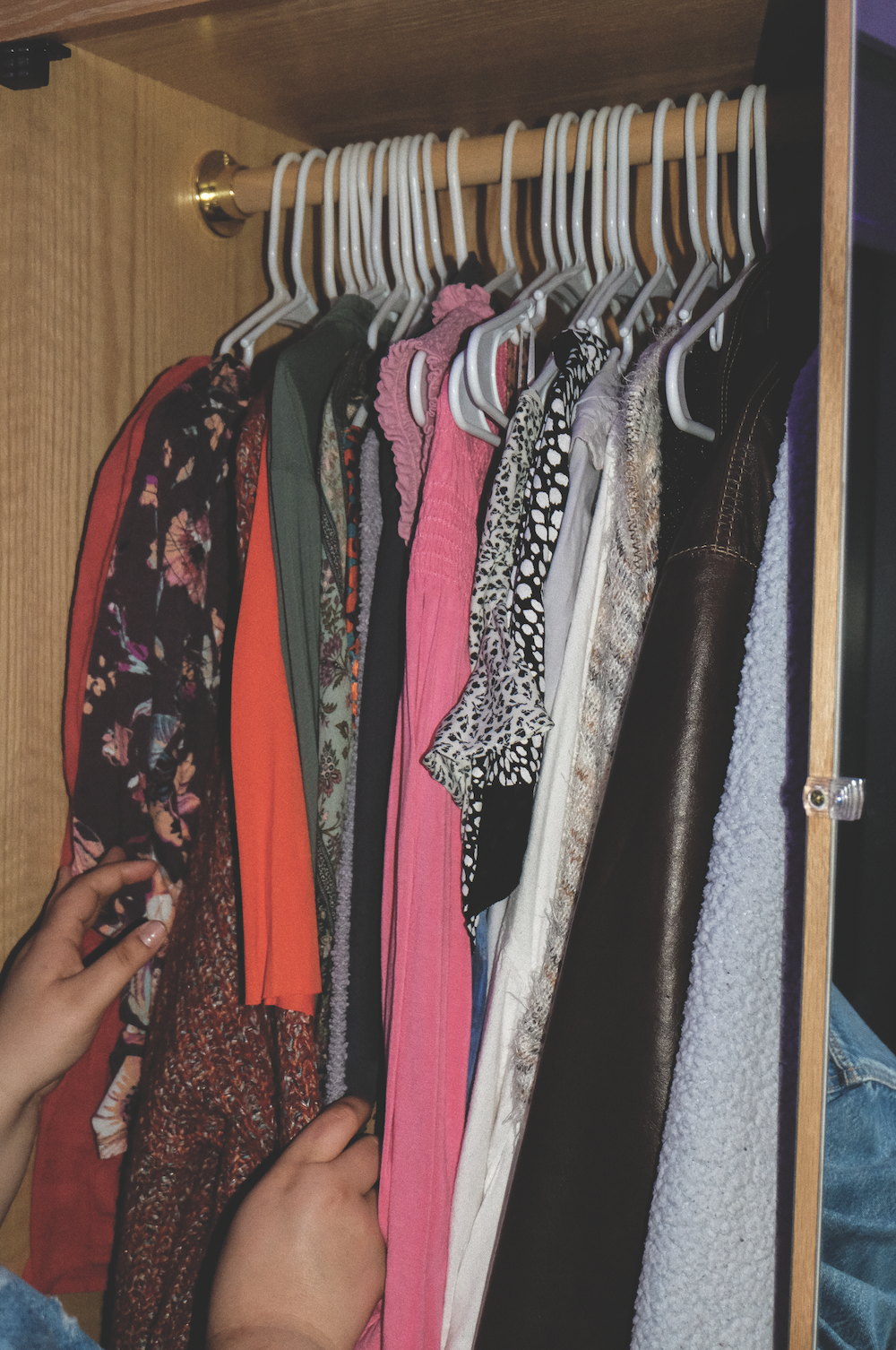The Ethics of Gentrification
Thrifting culture has boomed in the last few years among young people. TikTok and YouTube sparked attention toward secondhand fashion through “thrift haul” videos, while apps like Depop and ThredUp made vintage shopping virtual. ThredUp’s 2020 Resale Report notes that 40 percent of Generation Z shoppers bought secondhand in 2019 — a 15 percent jump from 2016. In some ways, this uptick is a good thing: it’s a more sustainable way of consumption that reduces individuals’ carbon footprints. However, as thrifting becomes a trend among upper- and middle-class shoppers, it runs the risk of gentrifying the shops that low-income communities rely on.
Gentrification is the process through which inhabitants of a poor, typically urban areas are displaced by wealthier people who take interest in the neighborhood. It puts low-income folks at risk by driving up pricing and thus reducing accessibility. While gentrification is typically only referenced when talking about whole neighborhoods, it can happen at the smaller, more intimate level of a storefront. Many poor people rely on the cheap prices of secondhand stores like Goodwill. As more people become interested in thrifting and purchasing from these stores, less clothing is available and prices tend to rise. For example, the 2010 Goodwill Valuation Guide marked items at a flat rate, and in 2020 showed a range of higher prices. This prevents shoppers who rely on the low price point of secondhand clothing from getting what they need.
Photo by Ian Hamilton
One big problem that has come to light with the rise in thrifting is the act of reselling. Currently a hotly debated topic in the sustainable community, reselling has become a trend for teenagers to buy used clothing for cheap, and then post the items at far higher prices on thrifting apps like Depop. While some argue that the increase in prices is fair, accounting for the time sellers spend looking for unique pieces in thrift stores, the justification still fails to acknowledge the harmful impact that reselling has on low-income communities. Some sellers will purchase items for next to nothing from poor neighborhoods, then price them on Depop for $50 because they’re trendy.
Resellers who buy out unnecessary amounts of stock negatively impact entire communities by initiating this process of gentrification. For example, many poor teens rely on the low prices of secondhand clothes to be able to build their style and self-expression.
“It’s selfish,” says Jeanie Thompson, Media Arts Production ‘24. “These people who have kind of invaded that space and invaded those communities have taken that from them.”
Thompson, like many students, thrifts regularly. Many college students make efforts to be environmentally conscious, but for most, the ridiculously high prices of sustainable, slow fashion brands are simply out of reach. Thrifting presents a cost-friendly way to purchase clothing without having to buy from unethical fast-fashion brands. There is a difference, however, between buying secondhand because one needs new clothes, and exploiting the low prices of thrift stores to make a profit.
“Some people have definitely taken advantage of that, and it has hurt people from low-income communities the most,” Thompson says.
So where is the line between buying used clothing and harming poor communities? While it’s a delicate balance, and one that is up to the discretion of each individual, there are steps consumers can take while thrifting to reduce possible negative effects. Traveling to a poorer neighborhood for cheaper prices gentrifies the stores there, so it’s important to stay in your own area to prevent driving up prices in other places. Additionally, instead of shopping with the intent to resell an item, shop with the intent to actually wear it. Then, when you’re ready to get rid of it, resell the piece at a price similar to what you bought it for.
Thompson says that she tries to donate some of her old clothes when she’s done wearing them. “There’s no reason for me to try to upsell those clothes when I know someone could use that a lot more than I do,” she says. Giving back and shopping mindfully will allow you to find that ethical balance.
The trend of thrifting has benefits, like making shopping more sustainable and accessible, but it’s important to regulate how we shop secondhand by avoiding reselling and overcharging. Gentrification has affected poor and BIPOC neighborhoods for decades now, and thrifting is just another way it’s emerging due to more affluent outsiders. It’s crucial to get educated and shop consciously to avoid harming low-income communities.

